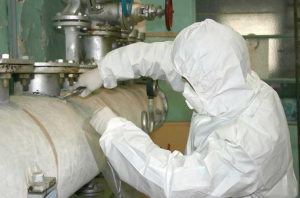Reliable Asbestos Testing for Air, Dust, and Building Materials

Asbestos was once a widely used material in construction because of its durability, heat resistance, and insulating properties. However, its fibers are now known to be highly hazardous to human health. Inhalation of asbestos fibers can lead to life-threatening illnesses such as asbestosis, mesothelioma, and lung cancer. Because asbestos is invisible to the naked eye, accurate testing is essential for identifying its presence. Reliable asbestos testing for air, dust, and building materials ensures that risks are correctly assessed and managed, protecting both occupants and workers from exposure.
The Importance of Reliable Asbestos Testing
The presence of asbestos cannot be determined through simple observation. Its fibers are microscopic and can remain suspended in the air for long periods, making exposure possible even without direct contact with materials. Reliable testing provides clarity and helps property owners, landlords, and employers make informed decisions about asbestos management. Without proper testing, there is a high risk of unknowingly disturbing asbestos and releasing harmful fibers.
Air Testing for Asbestos
Airborne asbestos fibers are the most dangerous form of exposure, as they can be inhaled directly into the lungs. Air testing is therefore a vital part of asbestos risk management, particularly in areas where asbestos removal or building maintenance has recently taken place. Reliable air testing involves using specialized equipment to collect air samples over a set period. These samples are then analyzed in a laboratory using techniques such as Phase Contrast Microscopy (PCM) or Transmission Electron Microscopy (TEM). Results from air testing provide a clear indication of whether asbestos fibers are present in concentrations that exceed safe levels.
Dust Testing for Asbestos
Asbestos can also settle in dust particles on surfaces within buildings. Dust testing is crucial in environments where contamination is suspected, such as after construction, demolition, or fire damage. Collected dust samples are carefully analyzed in laboratories to determine whether asbestos fibers are present. This type of testing is particularly useful for assessing risks in domestic homes, schools, offices, and industrial facilities. Reliable dust testing helps ensure that areas are safe for reoccupation and that no hidden contamination remains.
Testing of Building Materials
Building materials such as insulation, floor tiles, cement sheets, ceiling coatings, and pipe lagging are common sources of asbestos. Reliable testing of these materials is essential before carrying out renovation, refurbishment, or demolition work. Professionals take small, controlled samples of suspected materials and send them to accredited laboratories for analysis. Techniques such as Polarized Light Microscopy (PLM) are often used to confirm the presence and type of asbestos. By identifying asbestos in building materials, property owners can implement safe management or removal strategies before any work begins.
Benefits of Comprehensive Testing
Reliable asbestos testing provides multiple benefits across residential, commercial, and industrial properties. Firstly, it ensures accurate identification of asbestos, eliminating uncertainty. Secondly, it helps maintain compliance with health and safety regulations, which often require proper asbestos management. Thirdly, it reduces risks to occupants, employees, and contractors by confirming whether areas are safe for occupancy or work. Finally, it provides peace of mind for property owners, demonstrating a commitment to health protection and regulatory responsibility.
The Role of Accredited Laboratories
Accurate testing depends on analysis conducted in accredited laboratories. These laboratories follow strict quality standards and use advanced techniques to detect even the smallest fibers. Their expertise ensures that testing results are both reliable and legally recognized. This is particularly important in situations where results may need to be presented for regulatory compliance, insurance purposes, or property transactions.
Management After Testing
Once asbestos is identified in air, dust, or building materials, a clear management plan is required. Options may include leaving materials undisturbed if they are in good condition, encapsulating them to prevent fiber release, or arranging for safe removal by licensed professionals. Regular re-testing may also be recommended, especially in industrial environments where asbestos materials are more likely to deteriorate.
Conclusion
Reliable asbestos testing for air, dust, and building materials is a vital step in safeguarding health and complying with safety regulations. By accurately identifying asbestos risks, property owners and employers can take the necessary actions to protect occupants, workers, and visitors from exposure. Whether in a private residence, a commercial office, or a large industrial site, asbestos testing provides the knowledge needed to manage risks effectively. With reliable testing and appropriate follow-up measures, the dangers of asbestos can be significantly reduced, creating safer environments for all.




